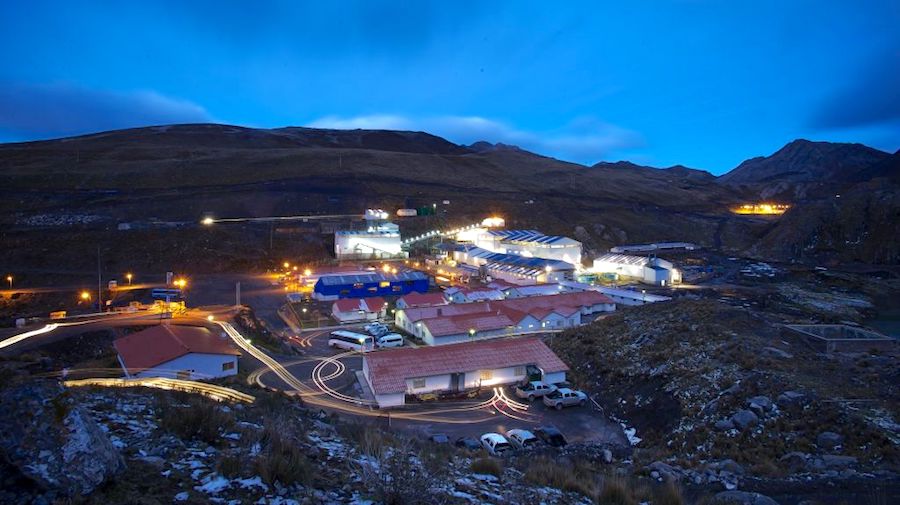
Mining companies operating in Peru are being forced to keep operations suspended and halt new ones as confirmed coronavirus cases in the country surged past 300,000 on Sunday, with several of the new infections happening in the copper sector.
Canada’s Trevali Mining (TSX: TV) said on Friday that a total of 82 workers had tested positive for covid-19 at its Santander mine, which would remain halted. The company had suspended operations in June after 19 workers tested positive. The number of confirmed cases now comprises nearly 30% of the total workforce of the mine.
Confirmed cases of covid-19 in Peru, the world’s no. 2 copper producer, surged past 300,000 on Sunday
London-based Hochschild Mining (LON: HOC) halted on Monday operations at its flagship Inmaculada gold-silver mine, after “a number” of workers there tested positive for coronavirus. The mine will now operate with a reduced workforce running care and maintenance activities at the site. The company expects to resume operations as soon as a safe and healthy workforce can return to the site.
Hochschild’s Pallancata silver-gold mine in Peru and the San José mine in Argentina remain open, it said.
Canadian Fortuna Silver Mines (NYSE:FSM) is also suspending operations at its Caylloma mine for two weeks. The decision follows the sudden death of a 34-year-old contractor on July 5.
The Vancouver-based miner said the cause of death had not been determined, but the worker had completed a health check, including a covid-19 test, which was negative.
Japan’s Mitsui Mining and Smelting seems to have the situation under control as it said on Monday it had resumed operations at its two zinc mines in Peru last week. The company’s Huanzala and Palka mines had been suspended for more than three months to limit the spread of the novel coronavirus.
The death toll from the virus in Peru, the world’s no. 2 copper producer, now stands at 10,589, the 10th-highest in the world, based on data from Johns Hopkins University. For confirmed cases, the Andean country has the fifth-highest in the world.
Disruptions related to the pandemic situation in Peru as well as in neighbouring Chile, the world’s largest copper producer, have been propelling prices for the metal in recent weeks.
After hitting a five-month high last week, copper was trading close to that milestones again on Monday thanks to growing optimism about demand in top consumer China and concerns about the spread of covid-19 among the world’s largest producers.
Benchmark copper on the London Metal Exchange traded up 1.5% at $6,105 a tonne in official rings. The industrial metal, also needed in the making of electric vehicles, hit $6,120 a tonne last week, the highest since January 22.
Analysts believe that copper will extend gains above $6,000 for days, especially after state-owned Codelco suspended expansion work at El Teniente, its largest copper mine.
Copper is expected to extend gains above $6,000 for days, especially after Chile’s Codelco suspended expansion work at El Teniente, its largest copper mine
It means that the world’s largest copper miner is now running parts of its two flagship divisions (Chuquicamata and El Teniente) at reduced levels.
Work at all of Codelco’s Northern District projects including Gaby, Ministro Hales and Radomiro Tomic have now been temporarily suspended.
While Chile managed to maintain output at high levels in May, curtailments and shift-pattern changes have begun to affect the country’s overall output. A clear view into how it fared in June will come on Tuesday, with monthly export data.
“The risks are clearly mounting and we believe completion timelines on the aforementioned structural projects are set to be further delayed,” said Colin Hamilton, analyst at BMO Capital Markets, in a note to investors.
“Suddenly a 2020 copper deficit is not beyond the realms of possibility,” he noted.
Benedikt Sobotka, chief executive of Eurasian Resources Group, said on Monday he believed the supply impact of the pandemic will extend far beyond 2020.
“Perhaps even more significant [than production disruption] are the losses on the copper scrap supply side, which have largely evaded media attention,” Sobotka said.
Trade data available for the top scrap exporting nations indicates a more than 50% yearly contraction in April shipments. “To put a sense of scale around this, scrap accounts for around a third of total copper consumption (including direct-use scrap),” Sobotka noted.
There is also important technical action in the charts, with spot copper now trading higher than in the futures market. In addition, the metal’s 50-day moving average is now fast closing in on its 200-day counterpart and may move above it in the coming days, Bloomberg analysts said on Monday.
The pattern, known as “golden cross,” normally anticipates further gains in an asset. The last time investors watched it unfold for copper was early this year, just before it collapsed due to the spread of the novel coronavirus.